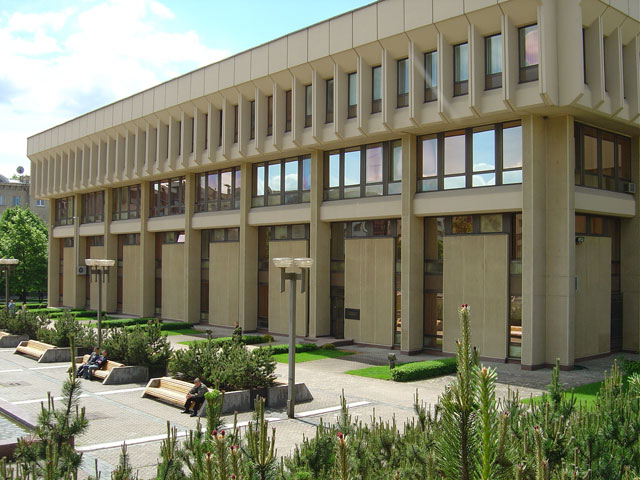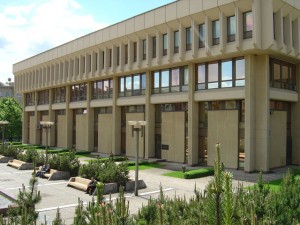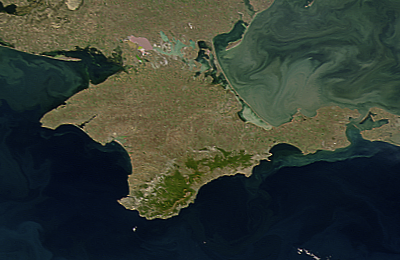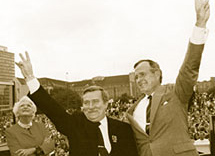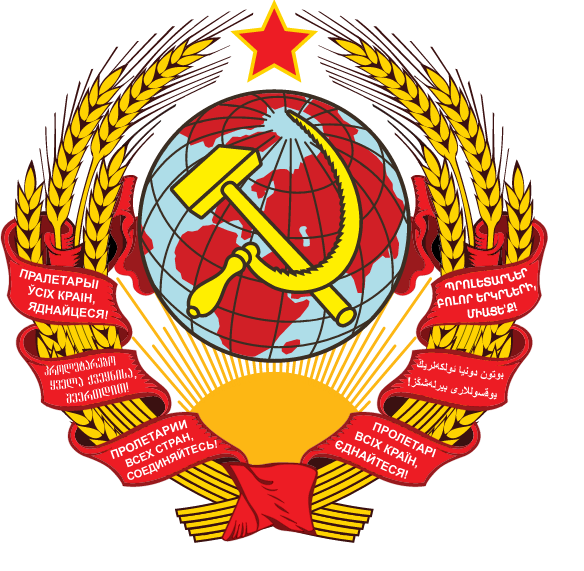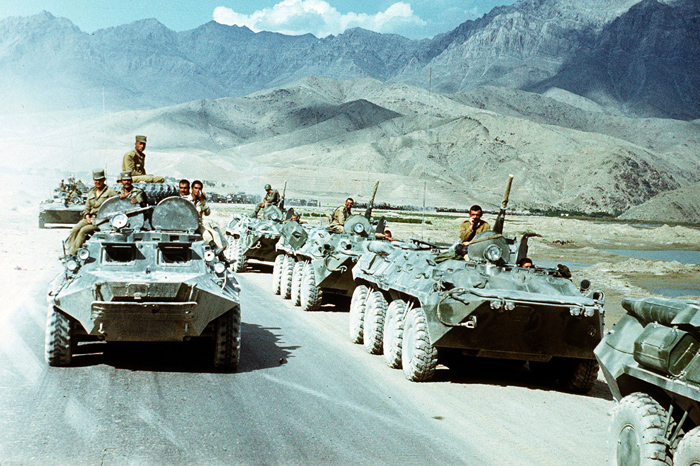Although the three Baltic States are often treated as they follow the same path, in fact differences between them are very significant. Especially Lithuania deserves some closer look as, unlike the other two, Lithuanians have long history of being recognized as a distinct ethnic group and separate state – first time this nation is mentioned in chronicles in 10091 and during its golden age Lithuania united with Poland developed into the one of the most powerful states in Europe, with territory extending as far as the Black Sea2. Thanks to the marriage between Grand Duke of Lithuania, Jogaila3 and Polish Queen Jadwiga4 Lithuania was Christianised in Western custom5 and that determined its long time Western orientation. Due to these and other factors, the new start in 1991 found Lithuania in very different situation to it’s neighbours.
One of the main factors for the nation-building question was that Lithuania had relatively small ethnic minorities – over 80% of population are native Lithuanians. Unlike in other Baltic States, most conflicts arised not with quickly declining Russian speaking population (8,5% in 19946 to 6,3% in 20057), but with minority (around 7%8) of Poles, who live mostly in Vilnius area, making up to nearly 80% of population in some districts. Unlike the Soviet era migrants, most of Poles settled there centuries ago during the Union of Lublin period, or at least in XIX and early XX century9. “The Union of Lublin of 1569 united Poland and Lithuania in an official Commonwealth in an attempt to provide a credible defence against the expanding Russian state (…) but by the end of eighteenth century this commonwealth had been divided by the far stronger states of Prussia, Russia and Austria”10. Ways of Poland and Lithuania diverged after both countries regained their independence in 1918. Despite Western propositions of the new order in Eastern Europe, Piłsudski hoped to establish the federation with Lithuania and other eastern countries to push the Soviet sphere of influence as far East from Poland as possible. When it was clear that this will be impossible and the West was considering Polish border near the Suwałki and Białystok towns, he ordered general Żeligowski to take over Vilnius11 and surrounding areas and then the Ligue of Nations could do nothing about it. As a result relations between Poland and Lithuania remained frozen until the Second World War, when the both countries encountered against common foes. Following the restoration of independence the old conflicts began to re-emerge12. “Isolation of the Lithuania during the Soviet period ensured that Lithuanians could not fully appreciate the enormous changes which had taken place in Poland during this time”13. The Lithuanians were suspicious about Polish declarations of recognition of the territorial integrity of Lithuania with Vilnius being part of it. But good relations with Poland were important as it could offer Lithuania good counter-balance for Russia and possible assistance in becoming NATO and EU member14” what was considered as an absolute priority by vast majority of Lithuanians15. The main field of conflict is usage of Polish language. Lithuania’s law regarding ethnic minorities perfectly complies to International Conventions but is strongly contradictory to the act about official language16. The administration strictly observes language act, denying rights to use Polish language sings, even in areas where 80% of population is Polish17, and to have Polish names spelled without Lithuanian endings18. The Lithuanian government considers language politics important for nation-building, as only 9.6% of population consider the same ethnic origin as a most prefered group for their identification. Nearly twice as much consider the same primary language a most important factor19 when the stated nationality was always rather a choosing thing than given one with most significant example oftwo brothers Narutavičius – Narutowicz. One became an Lithuanian nationalists movement activist, other became Polish President in 192220
The other challenge in the nation building issue is a creation of a new elites. Unlike in other Baltic States, Communist Party wasn’t russified and it was mostly composed from ethnic Lithuanians21 and therefore it was pro-independence already before collapse of the SU22. After the breakdown of the communist regime the new elites emerged from interaction between reform-flank of the old elites and mass democratic movement, where the intellectuals played especially important role by articulating democratic values.23 The Politics splitted basically into two camps: post-communists (mostly Lithuanian Democratic Labour Party), influenced by technocrats of the old system with experience in managing social and economic issues, and ex-opositionists (Homeland Union and Lithuanian Conservatives)24. But when the transition was over, most of the intellectuals withdrew from the politics, which reduced the overall quality of the political class25. Additionally, they were strongly influenced by Polish philosophy and intellectual culture in 1970s and 1980s26. All that factors resulted in post-communist victory in 1992 elections – people hoped that professional and experienced politicians, even from former communist party, would offer more efficient government than well intentioned enthusiasts from the new political powers27. That started constant fluctuation from left to right in the Lithuanian politics28. Due to the impact of Television and free media, party leaders play a more important role in achieving electoral success29 but that may lead to populism. After the first multi-party elections new protest, populist and single-issue parties appeared on the eve of every election30. Numerous political scandals, closed party recruitment procedures, unstable party leadership, splits also did not help to elite stability and consolidation. All that resulted in widespread scepticism towards democratic institutions31. There is now even some pro-Russian movement in Lithuania. The popular politician, who lost the presidential election in 2004 by the 5% only, Kazimiera Prunskienė, recently founded a new political party which criticizes government for ignoring eastern direction in international politics. It declares a will of closer relations to Alexander Lukashenko regime in Belarus, Kazakhstan and Russia. This is the first pro-Kremlin political party within EU32.
Despite lack of the quality elites, the successive governments from both sides of the political arena managed to solve most of the social and economical problems, typical for the ex-communist countries. Lithuania approved a democratic constitution and established very liberal citizenship and minority legislation33, although there were some issues with human and minority rights like question of Polish language or ban for ex-KGB employees from working in certain services and industries34. The country was returned to the market economy and most social and economic hardships were solved (despite such extreme situations like the inflation rate of 1165% in 199235) with the unemployed level maintained on comparatively low level36. Many elements of the Soviet social security system were incorporated into new systems of post-socialist states despite that social security was bound both by low resources and by commitment to liberal market values – during the economical transition, Lithuania recorded a significant drop in the social welfare facilities, for instance number of childcare facilities dropped from around 1700 in 1990 to less than 800 in 199437. The main issues though was to decrease Russian economical and political influence. People soon realised that although the idea of independence was to be completely separated from the USSR, it was impossible to break away from the Russian Federation, as the country was too reliant on it economically and there were still Russian Troops based in Lithuania38
At first problem of foreign army forces has to be solved. That was a success with the last Russian soldier living the country in October 1993 and arrangements for the Russian army transit to the Kaliningrad District agreed.39 Than the Lithuania’s economy had to be switched from the Russian market to Europe. The European Union played a significant role in that by expanding international trade exchange, investing in the country, providing know-how for some reforms and close partnerships such as the one between Port of London and Klaipeda Harbour40. Important challenge was to secure independence from the Russian energy with a Mažeikiai Oil Processing Plant being the main issue. This refinery, only in the country, was dependable of deliveries from the Russian pipeline network. As a part of the diversification of the energy resources, it was connected to Klaipeda Harbour by the rail link. Yet, despite American investments, the Mažeikiai Nafta company had to be taken into administration and put up for sale. The buyer, biggest Polish oil company Orlen, was warmly welcomed at the beginning, but when Poles expressed their will to invest in the Klaipeda Oil Terminal as well, the government opposed that, fearing that after gaining monopoly over all Lithuanian fuel market, company can be sold to Russians. Government decided to keep the oil terminal as the alternative way of importing fuel into the country, dismantling at the same time the rail link from Mažeikiai to Latvia to prevent Orlen from choosing the alternative ways, as the oil from the refinery creates 60% of traffic on the Lithuanian railways. This created the deadlock situation as the Poles claim that they cannot make the refinery economically efficient without the terminal, or at least the good deal from the Klaipeda and Lithuanian Railways and at the present the situation remains unsolved41.
Due to the high pressure put at the foreign policy the problem of the competences arised. In the early 1990s there were three centres dealing with a foreign affairs: the appropriate ministry, office of president and office of prime minister, while in common opinion the internal affairs were not handled carefully enough. But during this period Lithuania managed to establish widespread international connections with 20 embassies in Vilnius established already in 199442
Among the other issues tackled by the governments was the reform of the education system. The special programme, co-founded by the European Union, was focusing on the integration of the ethnic minorities by amending the curriculum and integrating minority schools into the main-stream education system43. In the same time though, there were changes to the electoral boundaries in the areas of dense Polish settlement made to influence the voting results44. Despite these actions, the integration of the ethnic minorities was a success –in Lithuania, where 22% of population speaks only one language. 41% is bilingual, 31% tri-lingual, the rest speaks 4 languages or more45, the studies shows a positive correlation between number of languages spoken and social participation – multilinguals participate more in the civic society46.
In 2004, only 13 years after the Vilnius TV Tower events, when Soviet troops killed 14 civilians47 in the last attempt to save Soviet Union from break-up, Lithuania became member of the European Union and NATO pact. Within much less than a generation it went all the way from the Soviet Union Republic to fully democratic and liberal state. Today citizens of Lithuania can enjoy freedom and proudly call themselves part of the Western World. Even the unstable politics and some ethnic minority issues aren’t nothing, what cannot be observed in some “old-EU” countries and the economy is heading in the good direction to catch up with the West. Therefore in my view, even despite these minor problems we can consider the Lithuania’s transition as a huge success.
1Ashbourne, A “Lithuania: The Rebirth of a Nation, 1991-1994”, Lexington Books, London-Boulder-New York-Oxford 1999 p.1
2Ashbourne, op. cit. p. 2
3Polish: Władysław Jagiełło
4Lithuanian: Jadvyga
5Jerzy Topolski “Historia Polski” [History of Poland], Polczek Publishing House, Warszawa-Kraków 1992, pp. 95-96
6 http://www.country-data.com/cgi-bin/query/r-8280.html (accessed 5 XII 2009 23:05)
7 https://www.cia.gov/library/publications/the-world-factbook/geos/lh.html (accessed 5 XII 2009 23:08)
8 http://www.country-data.com/cgi-bin/query/r-8280.html (accessed 5 XII 2009 23:05) and https://www.cia.gov/library/publications/the-world-factbook/geos/lh.html (accessed 5 XII 2009 23:08)
9 http://www.country-data.com/cgi-bin/query/r-8289.html (accessed 5 XII 2009 23:15)
10Ashbourne, op. cit. p. 2
11Polish: Wilno
12Ashbourne, op. cit. p. 46
13 Thomas Lane “Lithuania. Stepping Westward” Routledge, London-New York 2001, p 208
14 Lane op.cit., pp 208-209.
15Lane, op. cit. p. 211
16Stanisław Tarasiewicz “Litewski Europoseł szantażuje swój kraj” [“Lithuanian MEP blackmails his own country”] http://www.infopol.lt/pl/naujienos/detail.php?ID=2090 (accessed 7 XII 2009 17:51)
17mar, PAP “Ponad połowa ludności to Polacy, ale usuną polskie tablice” [“Despite fact that more than half of the population are Polish, Polish signs are to be removed”] in Gazeta Wyborcza 16/09/2009, accessed internet archive on http://wiadomosci.gazeta.pl/Wiadomosci/1,80708,7047121,Ponad_polowa_ludnosci_to_Polacy__ale_usuna_polskie.html (Accessed 8 XII 2009 18:02)
18rik, IAR “Litwa: Sprawa pisowni polskich nazwisk wciąż w impasie” [“Lithuania: Issue of the Polish names spelling still in impass”] in Gazeta Wyborcza from 12/11/2009, accessed internet archive on http://wiadomosci.gazeta.pl/Wiadomosci/1,80708,7249305,Litwa__Sprawa_pisowni_polskich_nazwisk_wciaz_w_impasie.html (Accessed 8XII 2009 18:07)
19 Virinija Dzvonkaite-Koivula “Multilingualism and multiculturalism” in Marko Lehti (ed.) “The Baltic as a Multicultural World: Sea, Region and Peoples”. BWV Berliner Wissenschafts-Verlag Berlin 2005 p. 171
20Vejas Gabriel Liulevicius “Elective Ethnicity: The Phenomenon of Chosen National Indentity in the Modern Baltic World” in Marko Lehti (ed.) “The Baltic as a Multicultural World: Sea, Region and Peoples”. BWV Berliner Wissenschafts-Verlag Berlin 2005 p. 157
21 Algis Krupavičius “The Left-wing Parties in Lithuania, 1990-2002” in Jane Leftwich Curry and Joan Barth Urban (ed.) “The Left Transformed in Post Communist Societiessss: The Cases of East-Central Europe, Russia and Ukraine” Rowman & Littlefield PublisheInc.Inc, Lanham-Boulder-New York-Oxford 2003 p. 103
22 Henri Vogt “Coalition-Building and Consensus: Comparative Observations of the Three Baltic States” in Sten Berglund and Kjetil Duvold (ed.) “Baltic Democracy at the Crossroads – an Elite Perspective” Høyskoleforlaget Kristiansand S 2003 p. 81
23 Algis Krupavičius and Giedrius Žvalisauskas “Political Parties and Elite Recruitment in Lithuania” in Sten Berglund and Kjetil Duvold (ed.) “Baltic Democracy at the Crossroads – an Elite Perspective” Høyskoleforlaget Kristiansand S 2003 p. 106
24 Krupavičius, op. cit. p 100.
25 Krupavičius and Žvalisauskas, op. cit. p. 106
26 Leonidas Donskis “Loyalty, Dissent and Betrayal” Rodopi Amsterdam-New York 2005 p. 25
27Ashbourne, op. cit. pp. 37-39
28 Krupavičius, op. cit. pp. 100-101
29 Krupavičius and Žvalisauskas, op. cit. p. 119
30 Krupavičius and Žvalisauskas, op. cit. p. 133
31 Krupavičius and Žvalisauskas, op. cit. p. 130
32Stanisław Tarasiewicz “Kazimiera Prunskienė założyła prorosyjską partię” [“Kazimiera Prunskienė founded pro-Russian party”] http://www.infopol.lt/pl/naujienos/detail.php?ID=2413&phrase_id=60875 (accessed 9 XII 2009, 23:56)
33 Krupavičius and Žvalisauskas, op. cit. p. 131
34 Krupavičius and Žvalisauskas, op. cit. p. 137
35Ashbourne, op. cit. p. 53
36 Krupavičius. op. cit., p. 113
37 Jolanta Aidukaite “The Emergence of the Post-Socialist Welfare State – the Case of the Baltic States: Estonia, Latvia and Lithuania” Södertöns Högskola Stockholm 2004 p 42
38Ashbourne, op.cit. pp. 37-39
39Ashbourne, op. cit, p. 83
40Ashbourne, op. cit, p. 80
41Krzysztof Szczepanik “Litewski los Orlenu” [“Lithuanian fate of the Orlen”] http://www.infopol.lt/pl/naujienos/detail.php?ID=2377 (accessed 9 XII 2009 18:10)
42Ashbourne, op. cit. p. 73
43Lane, op. cit. p. 139
44Lane, op. cit. p. 152
45Dzvonkaite-Koivula, op. cit, p. 171
46Dzvonkaite-Koivula, op. cit, p. 180
47Ashbourne, op. cit. p. 27
Picture: “Seimas litauensparlament“. Licensed under CC BY-SA 3.0 via Wikimedia Commons.

